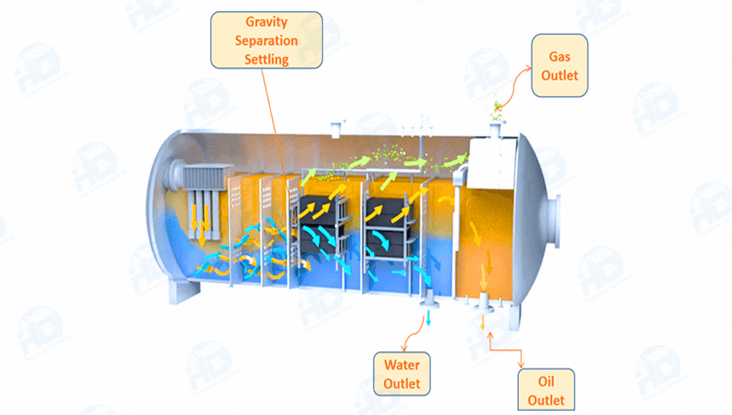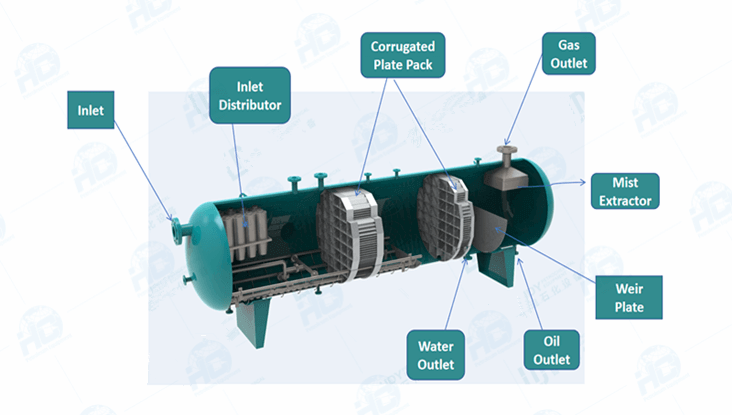How Oil and Gas Separators Work in Oil Fields
In oil fields,oil and gas separators play a crucial role in separating crude oil, natural gas, and water from the well stream. These separators are essential for optimizing production and ensuring the quality of extracted hydrocarbons. Here's a closer look at how these separators work:
Working Principle
Oil and gas separators use the difference in densities between the oil, gas, and water components to separate them. The well stream enters the separator and is directed through a series of baffles or plates, which slow down the flow and allow the different phases to separate.

The primary mechanism for separation is gravity. The lighter gases, such as methane and ethane, rise to the top of the separator due to their lower density, forming the gas phase. The heavier crude oil settles at the bottom, forming the oil phase. Water, being denser than oil, occupies the middle section.
Oil and gas separators typically have several internal components to enhance the separation process. These may include inlet devices to distribute the flow evenly, mist extractors to remove small droplets of liquid from the gas stream, and weirs or baffles to improve the separation of oil and water.
The efficiency of an oil and gas separator depends on several factors, including the design of the separator, the flow rate of the well stream, and the properties of the fluids being separated. Well-designed separators can achieve high separation efficiencies, ensuring that the produced oil and gas meet quality standards.

Applications
Oil and gas separators are used in various stages of oil field operations, including production, processing, and transportation. They are essential for separating oil, gas, and water at the wellhead and are also used in downstream processing facilities to further refine the extracted hydrocarbons.
Oil and gas separators play a vital role in oil field operations, helping to separate crude oil, natural gas, and water from the well stream. By understanding the working principles of these separators, oil field operators can optimize production and ensure the efficient extraction of hydrocarbons.
